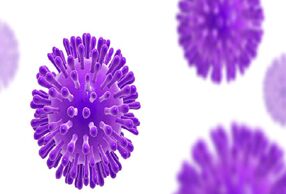新冠病毒演化出两个亚型
|
A Chinese doctor has warned the novel coronavirus can attack a person's central nervous system. It is the first case that proves the novel coronavirus can damage people's central nervous system, media reported Wednesday. Liu Jingyuan, dean of the ICU department of the Beijing Ditan Hospital and attending doctor of the 56-year-old patient, warned that doctors should check cerebrospinal fluid if patients suddenly slip in and out of consciousness, in order to lower the fatality rate of critical patients. The patient recovered and was discharged from hospital on February 25. The patient was hospitalized one month earlier for respiratory failure. Doctors conducted gene sequencing on his cerebrospinal fluid as he showed symptoms of neurological disorder like twitching on the face after days of treatments.
China issued the seventh treatment guide for COVID-19 on Tuesday that includes results of autopsies, which clarifies that the novel coronavirus could damage various organs including brain tissue. The novel coronavirus has evolved into two major subtypes, a Chinese study has revealed. The study, titled On the origin and continuing evolution of SARS-CoV-2, was published on the National Science Review of the Chinese Academy of Sciences (CAS) on Tuesday (March 3). By analyzing the genome-wide molecular evolution of 103 novel coronavirus samples, scientists found 101 samples that can be categorized into S-cov and L-cov based on 149 mutation spots on virus strains. The paper states that S type, accounting for 30 percent, is closer to the bat-related coronavirus and is relatively older, while the L type was more prevalent in the early stages of the outbreak in Wuhan. Human intervention may have placed more severe selective pressure on the L type, which might be more aggressive and spread more quickly than the S type. However, the authors highlighted the fact the data examined in the study is very limited. How L type strains evolved from S type, as well as how these mutations would affect the transmission and pathogenesis of the virus, are still unknown. Scientists also found most patients caught either the L or S type of novel coronavirus strain. But there might be exceptions to the rule that should be followed with further research. For example, the study said a 63-year-old female patient in Chicago had likely contracted both L and S types of novel coronavirus strains when she traveled in Wuhan and returned to the United States on Jan 13. |









